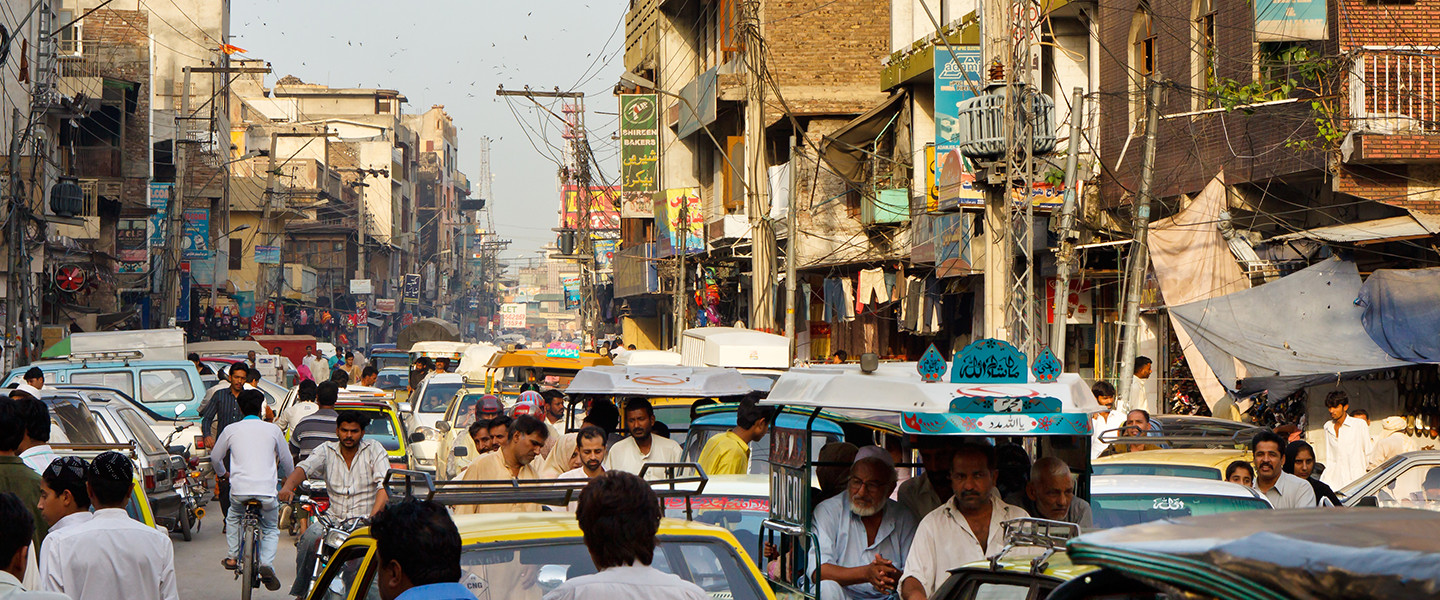Pakistan’s economy is turning a corner


Could substantial Chinese investment be a game changer for Pakistan’s economic prospects?
Some might be surprised to learn that, in purchasing-power parity terms, Pakistan’s economy is bigger than the Netherlands, South Africa and the UAE. However, the country’s growth potential has been overshadowed by political and security risks for much of the past decade.
It was during the visit of Chinese president Xi in April that China announced projects worth USD45 billion in Pakistan until 2030. Part of President Xi’s ‘One Belt, One Road’ initiative the mega-project, known as the ‘China-Pakistan Economic Corridor’ (CPEC), is significant at around 17 per cent of Pakistan’s GDP. It promises to help policymakers shift gears from stabilisation to growth.
Bottlenecks such as energy shortages mean Pakistan’s growth has been sluggish – just 4.2 per cent in 2014. CPEC promises to change this. USD34 billion is earmarked for power projects to add nearly half of the country’s current total energy generating capacity – 10 gigawatts of power – by 2018-20. An additional 6.5 gigawatts of power is to be added later. This should improve production and support the country’s struggling export-oriented sectors, such as textile.
The remaining USD11 billion is intended to link Pakistan’s southern port of Gwadar to western China. This ‘corridor’ could see Pakistan emerge as a regional trading hub by significantly reducing the current shipping distance from China’s eastern seaboard to the Arabian Sea en route to the Gulf and Africa. And beyond a bilateral undertaking, its benefits to Pakistan could be even greater if it becomes a route for wider connectivity across the south and central Asian region.
But for Pakistan to realise the full benefits of CPEC, alongside the creation of this ‘hard’ infrastructure, transparent policymaking, improving governance and cutting red tape is just as important to boost growth in our view. Pakistan slipped two places in the World Bank’s Ease of Doing Business 2016, ranking 138th out of 189. This shows there is a clear role for structural reforms outside the ambit of physical infrastructure.
Pakistan’s macro fundamentals are brighter today than at any time since the global financial crisis
Successful execution of projects at the CPEC-scale will also test Pakistan’s bureaucracy. The government will have to stay the course of fiscal reforms to increase the country’s tax-to-GDP ratio from around 11 per cent to make room for development spending. Also, its reliance on financing fiscal deficits through borrowing from banks has crowded out private sector borrowing – this will have to change if banks are to play a meaningful role in meeting any local-financing needs arising from CPEC-related projects.
It’s not just capital inflows from China boosting Pakistan’s growth potential. Thanks to stabilisation policies adopted under an IMF reform programme agreed in 2013, Pakistan’s macro fundamentals are brighter today than at any time since the global financial crisis.
Investors searching for yield are viewing Pakistan in a more positive light
Efforts to stabilise the economy since Pakistan suffered a near balance of payments crisis in 2013 have been helped by tailwinds from lower global oil prices: its foreign reserves recently reached an all-time high of USD20 billion up from under USD8 billion, giving better capacity to repay foreign debt. Although this is partly due to loans received by the IMF, international rating agencies have endorsed the country’s progress: Moody’s upgraded Pakistan’s credit rating to B3 in June and S&P revised its outlook to positive.
This helped Pakistan tap global bonds markets after a seven-year hiatus. The most recent issuance in September came amid emerging-market turmoil, suggesting that investors searching for yield are viewing Pakistan in a different, more positive light.
Investors will, of course, be keeping an eye on whether the balance of payments can remain stable longer-term. A boost to exports from better energy supply would help; as would an increase in foreign direct investment as infrastructure across the country improves.
Pakistan’s demographics also give reason to be optimistic. The country has the world’s sixth largest population, about the size of the UK, Turkey and Spain combined. Around 60 per cent of Pakistanis are of working age – this fuels a vibrant domestic market. Private consumption, Pakistan’s biggest driver of GDP growth, makes the country less vulnerable to sluggish demand in overseas markets than in other Asian countries.
We believe Pakistan has a genuine opportunity to raise productivity and break out of the supply-side bottlenecks that have constrained growth, leaving it vulnerable to commodity-price shocks. But for growth to really take off, Pakistan needs timely execution of the new energy and infrastructure projects, and policymakers must maintain reform momentum past the conclusion of the IMF programme, which ends in 2016. If this happens, we think growth could rise from an expected to 4.4 per cent in 2016 to 5.5 per cent in 2018.
Important disclosures can be found in the Global Research Terms & Conditions